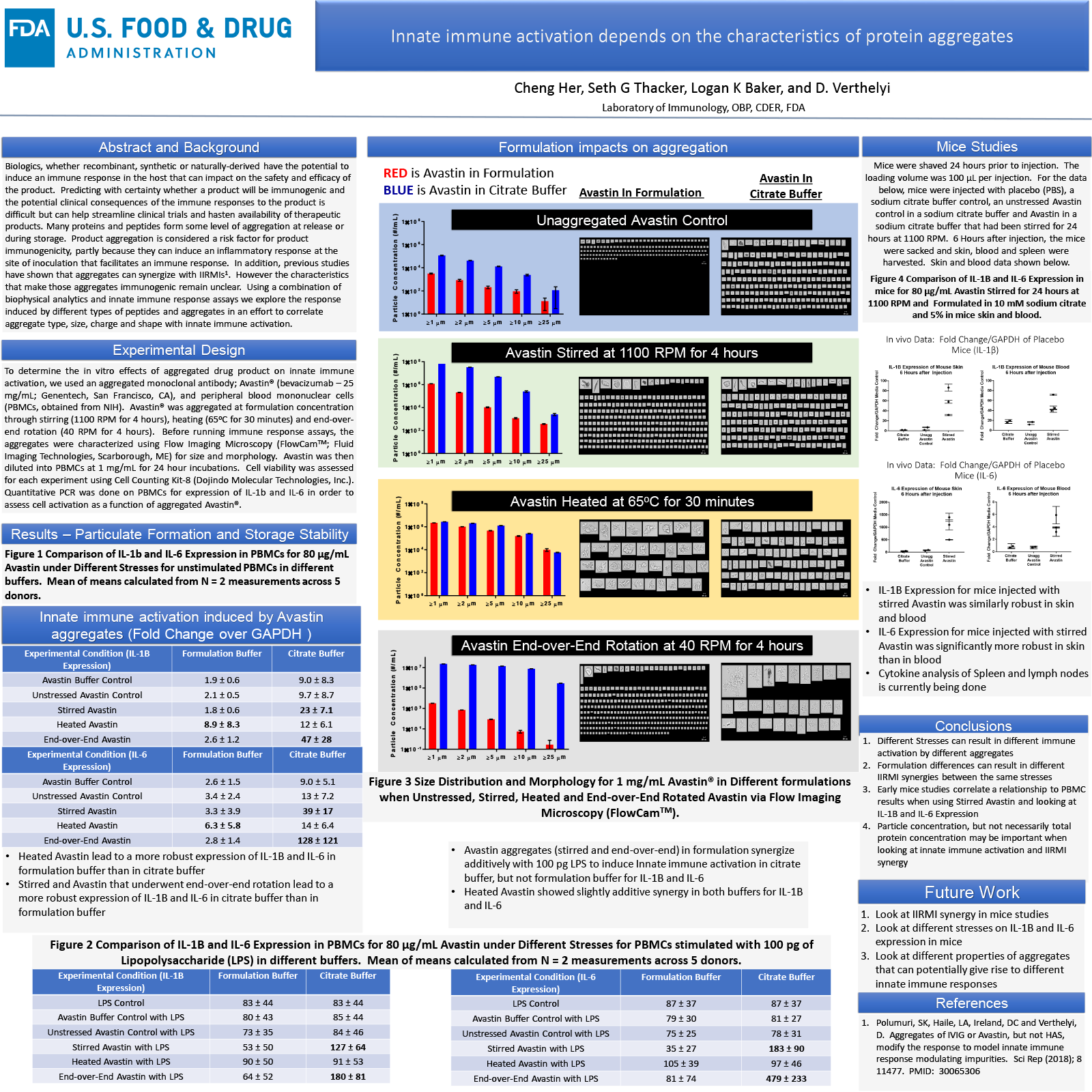2021 FDA Science Forum
Development of cell-based assay to characterize product aggregate attributes associated with innate immune activation
- Authors:
- Center:
-
Contributing OfficeCenter for Drug Evaluation and Research
Abstract
Biologics, whether recombinant, synthetic or naturally-derived have the potential to induce an immune response in the host that can impact on the safety and efficacy of the product. Assessing the immunogenicity risk of a product and the potential clinical consequences of the immune responses to the product is difficult but can help streamline clinical trials and hasten availability of therapeutic products. Many proteins and peptides form some level of aggregation at release or during storage. Product aggregation is considered a risk factor for product immunogenicity, partly because they can induce an inflammatory response at the site of inoculation that facilitates the induction of an immune response. However, the characteristics of the aggregates that make them more or less immunogenic remain unclear. Using a combination of biophysical analytics and innate immune response assays we explore the response induced by different types of peptides and aggregates in an effort to correlate aggregate type, size, and shape with innate immune activation in vitro. Results show that not all product aggregates increase the immunogenicity risk.

